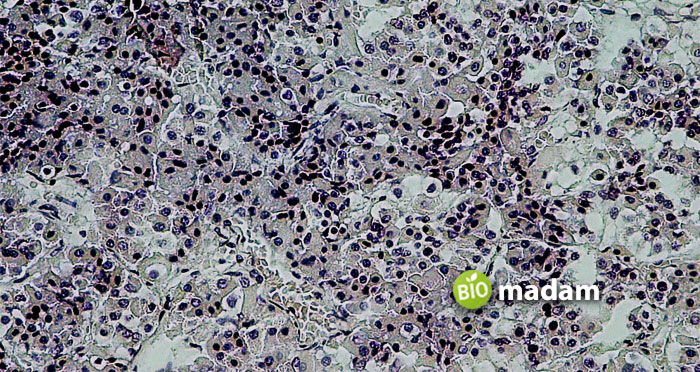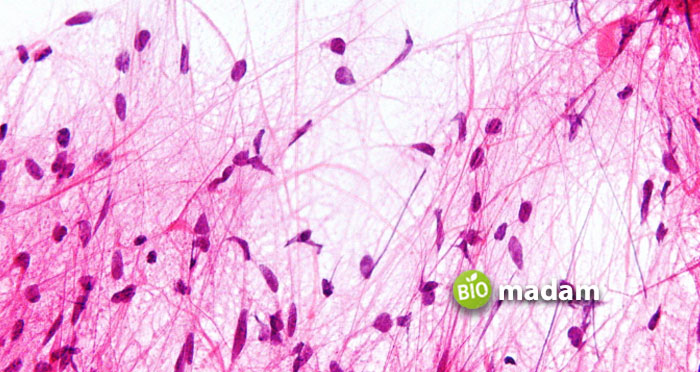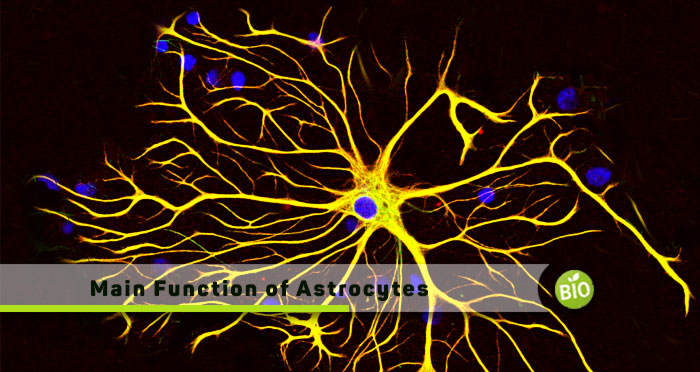Recently updated on January 3rd, 2026 at 06:36 pm
The nervous system, comprising the somatic and autonomic components, is a complicated system in the body. It constitutes different tissues and organs performing a specific function in regulating bodily actions. While the brain and spinal cord are the most prominent parts of the system, it operates properly through the contribution of other cells. These include neurons and glial cells. These cells are further categorized to form different roles. Let’s tell you about the main function of astrocytes, including their other roles.
What are Astrocytes?
Astrocytes are the most widely found cell type of glial cells in the CNS. They have a star-shaped structure due to the tendrils from the cell. They may be short, long, branches, straight, crooked, or have a simple shape. Humans have various subtypes of astrocytes in different parts of the brain. Some of the subtypes of astrocytes in humans include fibrous, interlaminar, protoplasmic, varicose projection, and layer-1 astrocytes. Researchers are working towards finding the exact function of each type of astrocyte in body physiology.
Function of Astrocytes
The main function of astrocytes is maintaining neuronal metabolism and brain homeostasis. The star shape of the cells contributes to the microarchitecture of brain parenchyma. They support the neurons mechanically and exhibit plasticity and synaptogenesis. They also release lactate and glucose through oxidative phosphorylation and glycolysis. Astrocytes contribute to repair, neurotransmission, and vasomodulation within the nervous system. The unique functions of the astrocytes are attributed to their unique shape. Thus, they also control and regulate the neurotransmitter and metabolite concentration besides regulating the water movement and the sleep-wake cycle. The list of functions of astrocytes is widespread. Here are a few prominent functions of astrocytes in the body:
Neurodegenerative Diseases
Studies in the past have shown that astrocyte overactivity in Alzheimer’s disease led to worsening the situation and deteriorating components of the nervous system. This observation resulted from the association of amyloid plaques with reactive astrocytes. However, recent studies have shown that reducing the number of astrocytes in mice did not improve the condition but worsened it. Thus, it has been deduced that the activated astrocytes may be more defensive to exhibit a neuroprotective response. The formation of glial scars in these diseases allows the site of damage to isolate and heal faster. However, the response produced by the cells may reach a point that may damage the tissue and cause inflammation. The astrocytes become dysfunctional in the later stages of neurodegenerative diseases. Thus, the connection of astrocytes with neurodegenerative diseases may depend on how long the astrocytes can perform their duties well before losing their activity. The function of astrocytes in neurodegenerative diseases depends on the exact nature of the cell and the prognosis of the disease or infection which requires more research.
Immune Function
Astrocytes are heterogeneous cells with multiple functions, one of which is their role in the innate or adaptive immunity. Astrocytes contribute to the worsening or relieving of inflammation in the body as they can be pro-inflammatory or anti-inflammatory. The dual inflammatory function of these cells allows them to contribute to the neuroimmune function. Eventually, it plays a significant role in preventing diseases and disorders in the brain.
They induce T cell apoptosis and present antigens to T cells. Astrocytes also reprogram T cells to a pro- or anti-inflammatory phenotype according to the type of response needed. Their function also involves a pro or anti-inflammatory mediator. These cells secrete mediators such as BAFF, CCL2, CXCL10, and interleukin-6, contributing to innate and adaptive immune responses.

Glial Scar Formation
The astrocytes in the brain help produce glial scars instead of fibrous scars in case of an injury. The glial scars form through the process of astrogliosis comprising reactive astrocytes. Glial scar formation is common in neurodegenerative diseases, infections, infarction, traumatic brain injury, and cancer.
Ionic Concentration
Astrocytes contribute majorly to the regulation of ionic concentration in extracellular spaces. The concentration of these ions in the extracellular fluid plays a prominent role in generating and transmitting nerve impulses in the neurons. They maintain and control the ion concentration by regulating extracellular potassium levels. Changes in the ionic concentration may disturb the activity of the neurons to generate nerve impulses.
Waste Removal
Astrocytes are responsible for the removal of cellular waste from the CNS. They collect wastes like metabolites and other products and move them to blood vessels (capillaries). Thus, their active participation in managing waste products ensures the removal of harmful substances from the nervous system.
Networking
Astrocytes act as a communication network as they pass signals from one to the other through gap junctions and perform highly coordinated communication. This communication helps regulate various activities in the brain and spinal cord.
Blood-Brain Barrier Formation
Astrocytes contribute to the blood-brain barrier that prevents the movement of large molecules including proteins and other ions from the blood into the brain. The blood-brain barrier ensures unwanted substances do not pass from the capillaries to the extracellular matrix of the brain. Astrocytes have vascular feet which encircle the endothelial cells of the capillaries to prevent the transfer of materials.
Astrocytoma
Astrocytoma is a cyst or tumor originating in astrocytes. This type of tumor develops, grows slowly, and eventually enters the surrounding tissues. Astrocytoma may develop in people of all ages and is categorized on the patient’s age. It can be pediatric astrocytoma or adult astrocytoma. Most astrocytoma occurs in a diffuse form than a clearly defined area.
Seizures, weakness, numbness in the arm or leg, personality changes, and headaches are common signs and symptoms of astrocytoma. Sometimes, the patients may experience changes in their cognitive behavior, concentration, decision-making, and problem-solving. The symptoms may vary between individuals depending on the size and location of the tumor. The tumor may appear in different parts of the nervous system and the brain including the temporal and frontal lobes.
Diagnostic tests like MRI and CT scans can help doctors find out about the tumor. The most common treatment is the immediate surgical removal of the tumor. Sometimes, complete tumor removal may require radiation therapy besides chemotherapy.

The Bottom Line
Astrocytes are important components of the nervous system that provide support to neurons. They glue together neurons and offer them mechanical support. Their role in inflammation makes them an important marker for understanding the diagnosis and prognosis of various diseases. Maintaining communication between neurons is the main function of astrocytes. Sometimes, astrocytes may give rise to tumors called astrocytomas. They can be treated through surgery, radiation, and chemotherapy.
FAQs
What do astrocytes protect?
Astrocytes have a significant role in acting as a glue to provide mechanical support to the neurons. They also protect the neurons from further damage in case of acute or chronic injury.
What are the two types of astrocytes?
Astrocytes are basically of two types: fibrous and protoplasmic astrocytes. Fibrous astrocytes are present throughout the nervous system and comprise long fibers. Alternatively, protoplasmic astrocytes are highly branched and found in gray matter.
What are the three 3 types of glial cells in the CNS?
Astrocytes, microglial cells, and oligodendrocytes are the three types of glial cells in the CNS.
Do astrocytes have an immune function?
Astrocytes are involved in the innate immune system. They may act pro-inflammation or anti-inflammation depending on the need. They have an important role in neurodegenerative diseases and also provide energy for cellular functions.
Do astrocytes produce myelin?
Astrocytes contribute to the production of myelin sheath by providing cholesterol content. The blood-brain barrier prevents the entry of peripheral cholesterol into the brain.
How do astrocytes protect neurons?
Astrocytes help protect neurons after brain ischemia by increasing the glutathione levels in the neurons and releasing erythropoietin while maintaining the levels of ions.
What happens if astrocyte is damaged?
Damage to the astrocyte results in the loss of cellular neural function, which may be due to neurodegenerative disorders. These disorders include Huntington’s and Alzheimer’s disease.

Hello, I would like to introduce myself to you! I am Chelsea Rogers, an experienced blog writer for science articles, holding an MPhil degree. My enthusiasm to grab the best knowledge, let it relate to botany, zoology, or any other science branch. Read my articles & let me wait for your words s in the comment section.

